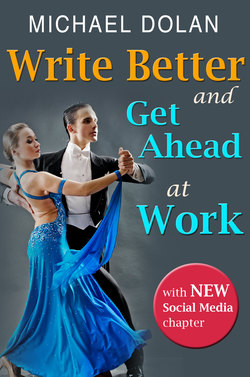Читать книгу Write Better and Get Ahead At Work - Michael Dolan - Страница 9
На сайте Литреса книга снята с продажи.
Thinking about Reading
ОглавлениеDoes this guidebook, then, teach you how to write like a reporter? No. It shows you how people in our society expect to receive information—when they pick up a newspaper or when they pick up your memo. By understanding what readers expect, a successful writer puts those expectations to work for him or her, instead of working against them. “Wordy” and “boring” are probably the two most common terms used to describe work writing in America today. Often used, rarely explained, these criticisms confuse rather than clarify.
“Wordy” usually means the writer does not meet the reader’s expectation that a main point will become clear in the first paragraph with background to follow. Too often we make the mistake of chronology by first telling what happened last year, then last week, before finally stating in a memo what people expect: what is happening now. “Boring” is another way of saying the message is not about “me.” People the world over value one thing over all else, themselves. I will leave for others the discussion of why immediate self-interest has become the human norm. All I know is that people are first interested in what affects them in their daily lives.
Reader point of view, then, becomes the way to determine what to put into that lead statement. So that becomes the next major exercise of the Write Better and Get Ahead at Work guidebook. And off it goes, showing you how to write anything quickly and well with a sense of satisfaction in a job well done.
Much of the Write Better and Get Ahead at Work approach challenges common ways of thinking about writing. As you read this book, you will be asked to think differently. One of the major changes will be to move you from “creating writing” to “creating reading.” From the beginning, the successful work writer thinks about the reader. In fact, an effective editing technique is to concentrate totally on the reader, organizing information around the reader’s life and including only those sentences the reader will want, regardless of how important they may be to the writer.
This guidebook, unlike any other writing manual I have seen, assumes the most important step for writing improvement comes from you, not the author. Throughout each section are exercises so that you can apply new ideas to your workplace immediately. Direct application of writing ideas to what you want to accomplish today is the central purpose of Write Better and Get Ahead at Work.
